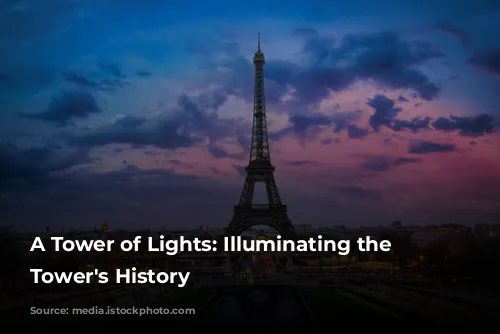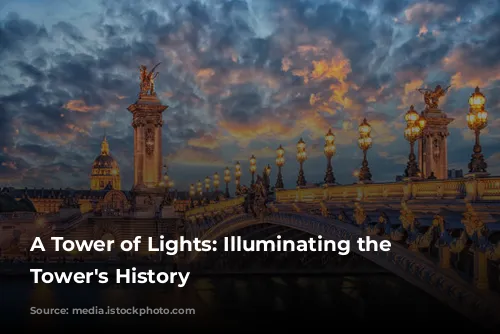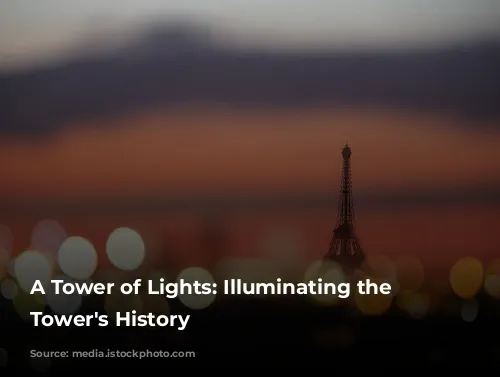The Eiffel Tower, a symbol of Paris and a marvel of engineering, has captivated the world since its inception. Its illumination has always been an integral part of its allure, captivating the imagination and drawing the eye toward its majestic form even after sunset.
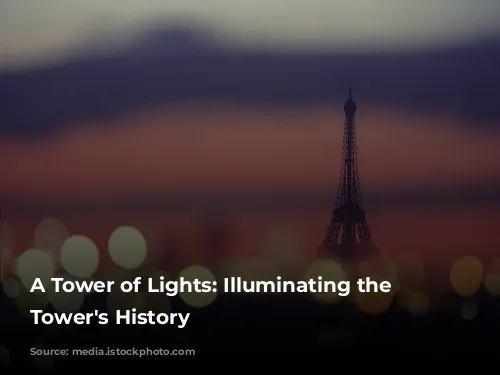
The Dawn of Illumination: From Gas to Electricity
The Eiffel Tower’s debut in 1889 coincided with the era of gas lighting. Ten thousand gaslights were strategically placed to emphasize the tower’s structural beauty. A beacon, encased in glass and topped with a dome, graced the tower’s summit. Mobile spotlights, mounted on rails, could be moved around the third floor, including Gustave Eiffel’s office, creating a dynamic display of light.
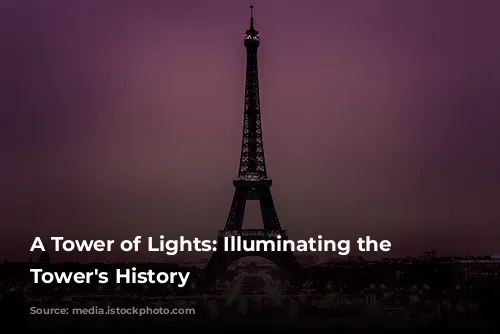
Modernization and Innovation: A Shifting Landscape of Illumination
As the 20th century dawned, electricity revolutionized the Eiffel Tower’s lighting. Gaslights were replaced with electric bulbs, highlighting the tower’s intricate framework. The 1925 World’s Fair brought an innovative spectacle, André Citroën‘s name illuminated in giant letters on three sides of the tower. These letters, a testament to the artistry of Fernando Jacopozzi, graced the tower until 1936, with a clock added in 1933.
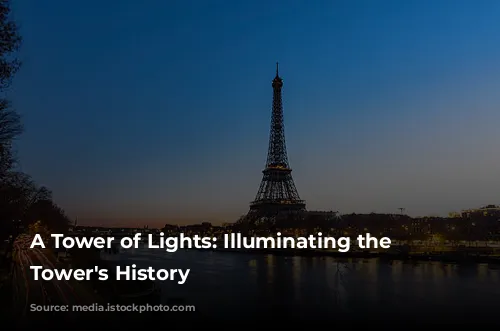
A New Era of Light: Interior and Exterior Design
The 1937 World’s Fair inspired a new approach to Eiffel Tower illumination. Architect André Granet, married to one of Gustave Eiffel’s granddaughters, envisioned a light show that emphasized the tower’s internal structure. Fluorescent tubes, creating a delicate lace-like pattern, illuminated the spaces under the first floor and between the four pillars. Thirty exterior spotlights enhanced the tower’s presence. These spotlights were later replaced in 1958 by 1,290 small lights strategically placed around the tower.
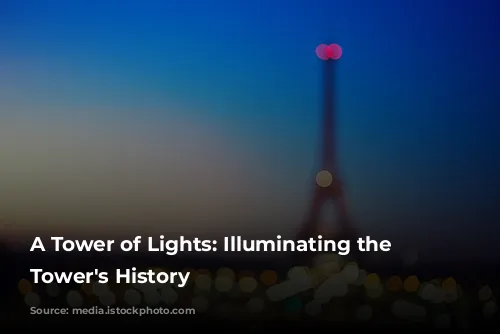
A Jewel in the Night: The Current Illumination
The Eiffel Tower’s illumination underwent a dramatic transformation in 1985. Pierre Bideau, a lighting engineer, designed a system that incorporated 336 sodium-vapor lights inside the tower’s structure. This innovative approach transformed the tower into a beacon of light, radiating a warm yellowish-orange hue. This system, inaugurated on December 31, 1985, is still in use today.
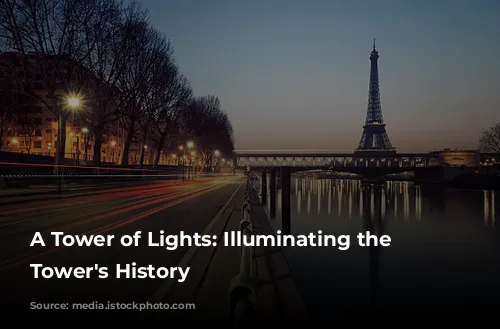
Sparkle and Sweep: Adding More Dimensions to Light
To further enhance the Eiffel Tower’s nightly spectacle, 20,000 sparkling lights were added in 2000, adorning the tower’s exterior. These lights, initially intended as a temporary installation, remained a fixture, twinkling for ten minutes every hour. The beacon on the summit was replaced with four spotlights that rotate, creating the illusion of a rotating beacon.
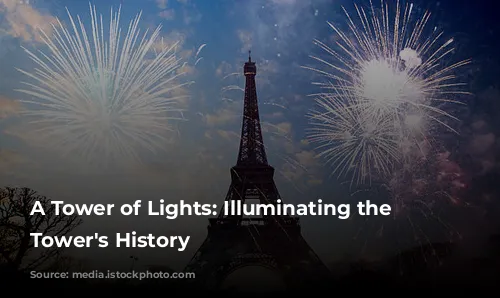
Adapting to Change: Energy Savings and a Changing Landscape
In 2004, the Eiffel Tower’s illumination underwent a transition, shifting towards energy conservation. The power of the spotlights was reduced, but with improved efficiency, maintaining the same beautiful effect. As part of the City of Paris’ energy saving plan, the Eiffel Tower’s lighting times were adjusted in 2022, turning off the lights earlier to conserve energy.

A Symbol of Light and Emotion: The Eiffel Tower’s Illuminations
The Eiffel Tower’s illumination has served as a canvas for conveying a range of emotions and messages. It has been adorned with various colors to commemorate significant events, from the year of France in China to the rugby World Cup and the fight against breast cancer. The Eiffel Tower’s lighting has become a powerful symbol, speaking to a global audience.
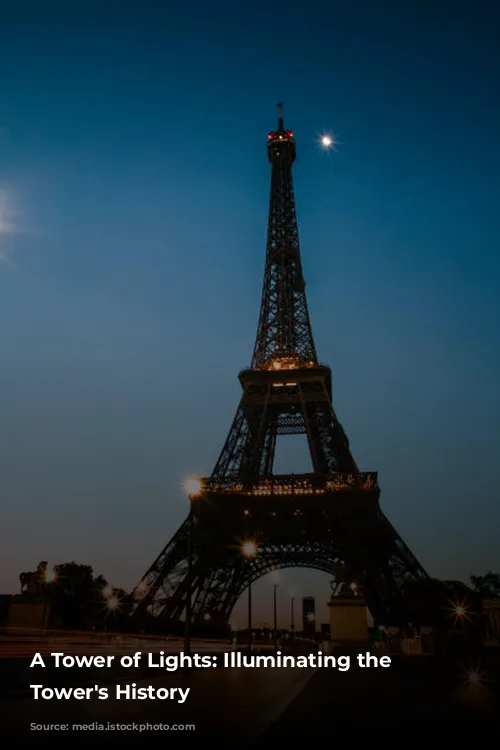
A Legacy of Illumination: The Eiffel Tower’s Enduring Beauty
The Eiffel Tower’s illumination has evolved over time, reflecting technological advancements and societal shifts. It has remained a constant, showcasing the tower’s beauty and captivating the imagination of countless visitors. As technology continues to evolve, the Eiffel Tower’s illumination will undoubtedly continue to transform, always striving to captivate and inspire.

